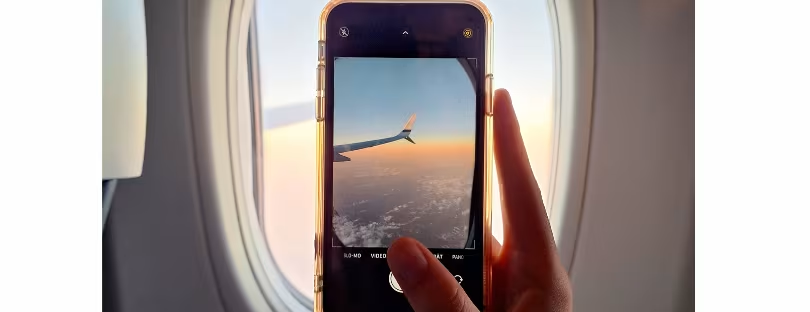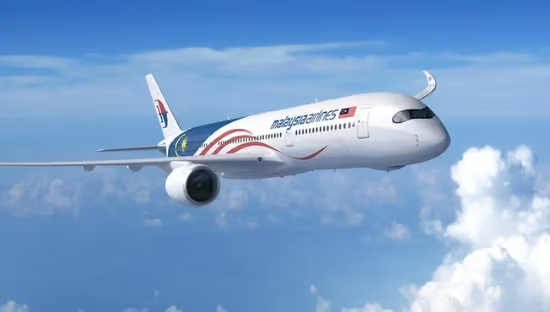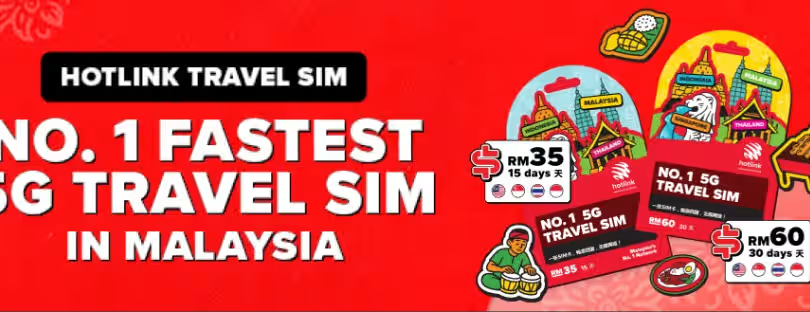
Why Airlines Quietly Love When You Forget to Buy an eSIM Before Your Flight
Most travelers today know the sinking feeling: you land in a foreign country, turn off airplane mode, and realize you’re still stuck on your home carrier’s roaming plan. That “Welcome abroad!” text hits your phone like a gentle but expensive slap. You promise yourself, next time I’ll remember to download an eSIM before the flight.
But here’s the truth airlines don’t exactly advertise: they quietly love when you forget.
Not because they want you to suffer, but because your roaming misstep feeds directly into a revenue stream that keeps their loyalty programs, co-branded credit cards, and even some in-flight services humming. To understand why, you have to zoom out and look at how aviation and telecom have been holding hands for years.
Roaming: The hidden cash cow
Let’s start with the basics. When you land abroad and your home carrier’s roaming kicks in, you’re not just paying your mobile operator. Airlines often sit downstream in that chain, thanks to long-standing partnerships with telecom providers.
Here’s the simplified loop:
- Your phone connects to a local network abroad.
- Your home carrier pays that local network for access.
- You get billed a roaming rate (often inflated).
- A slice of that revenue flows into “partnership pools” that airlines tap into through their loyalty programs and ancillary deals.
It doesn’t matter whether you’re flying business class or on a low-cost ticket. If you’re paying €12 per megabyte of data, that’s fuel for airline balance sheets—without the airline having to lift a finger.
Airlines and telcos: Old friends with deep pockets
Think about the big travel loyalty ecosystems. Your frequent flyer miles aren’t just earned in the sky anymore; they’re earned on the ground every time you swipe a credit card, book a hotel, or even pay a mobile bill. Telcos have long been some of the most valuable partners in those ecosystems.
For airlines, telco partnerships are golden because:
- Predictable revenue: People always need connectivity abroad. Even in the age of free Wi-Fi, we want WhatsApp, Google Maps, or Instagram the moment we land.
- No operational cost: The airline doesn’t manage the network infrastructure; they just collect the loyalty or commission slice.
- Cross-sell potential: Want bonus miles? Sign up for a roaming plan with Airline X’s telecom partner. It’s the same playbook as co-branded credit cards—only sneakier.
So when you forget to preload an eSIM, you’re not just a “disorganized traveler.” You’re an ideal customer: someone who accidentally triggers the old, high-margin revenue funnel.
The psychology of forgetfulness
Let’s be real: buying an eSIM is easy. Download an app, scan a QR code, and you’re set. But travel days are chaotic. You’re juggling boarding passes, seat upgrades, security lines, duty-free temptations, maybe even kids or colleagues.
Airlines bank on that chaos. They know the average traveler isn’t going to sit at the gate comparing eSIM plans for Singapore versus Thailand. Instead, they’ll deal with it later—meaning they’ll land in Bangkok, open their phone, and… ka-ching. Roaming charges activated.
It’s not malicious. It’s just good business psychology: inertia is profitable.
In-flight Wi-Fi: Another piece of the puzzle
Now layer in in-flight connectivity. Airlines make hefty deals with satellite providers, often subsidized or offset by telecom partnerships. Ever wonder why some carriers offer free WhatsApp or messaging mid-air? It’s not generosity—it’s an upsell funnel.
If you forget your eSIM and panic mid-flight (“How will I book an Uber at the airport?!”), suddenly paying €7 for slow Wi-Fi feels like a lifeline. The more stressed and unprepared passengers are about post-landing connectivity, the more in-flight packages move.
Your forgetfulness before takeoff drives not just roaming revenue after landing but also Wi-Fi revenue while you’re still in the air.
Loyalty programs: The silent glue
Frequent flyer programs are no longer just “perks.” They’re massive profit engines, often more valuable than the airline itself. (Case in point: American Airlines’ loyalty program is estimated to be worth more than the airline’s core operations.)
Telcos feed these loyalty beasts. Every time a mobile operator buys a batch of miles to reward customers who sign up for a roaming package, the airline books guaranteed cash. Those miles eventually trickle back to you, but the profit sits with the airline.
If eSIM adoption keeps rising, that model gets disrupted. Why would a traveler pay €50 for a roaming bundle that comes with 1,000 miles when they can buy a €10 eSIM that just works? Airlines know this, which is why they’re in no rush to educate you about eSIMs.
Why eSIMs make airlines nervous
Here’s the disruptive angle: eSIMs cut airlines out of the loop.
When you preload an eSIM from an independent provider (say, Airalo, Airhub, or Nomad), your money never touches the legacy telco-airline revenue web. You bypass the roaming trap, skip the loyalty miles, and connect directly at local rates.
From the airline’s perspective, that’s lost passive revenue. No telco commission, no mileage sale, no desperate Wi-Fi upsell at 30,000 feet. Multiply that across millions of passengers, and the shift starts to hurt.
That’s why some airlines are tentatively experimenting with their own eSIM products, bundling data into their apps or loyalty programs. But let’s be honest: they’re late to the game, and independent eSIM providers move faster.
The quiet strategy: Don’t mention it
So why don’t airlines shout about eSIMs in their newsletters or pre-flight reminders? Easy. Silence protects the old model.
If you get smart about eSIMs, you save money—but airlines (and their telco friends) lose it. By keeping eSIMs out of the conversation, they let human forgetfulness do the work. You’re too busy worrying about boarding groups and overhead bin space to remember to download that €8 plan.
By the time you land, it’s too late. You’ve already triggered a roaming session. And somewhere in an airline boardroom, that looks like “ancillary revenue.”
So what should travelers do?
If you want to beat the system, the answer is simple: don’t let the airline’s silence be your downfall.
- Download an eSIM before you fly. Even if you don’t activate it until you land, it’s there waiting.
- Compare providers. Independent eSIM companies usually undercut roaming rates by 70–90%.
- Think multi-country. If you’re hopping around Europe or Asia, buy a regional eSIM. That’s where the real savings stack up.
It’s not about sticking it to the airlines. It’s about reclaiming control of your travel budget.
The bottom line
Airlines are masters of ancillary revenue. They’ll charge for checked bags, priority boarding, extra legroom—and yes, they’ll happily skim revenue from your roaming slip-ups.
When you forget to buy an eSIM before your flight, you’re not just inconvenienced. You’re unknowingly fueling a finely tuned ecosystem where aviation and telecom profits intertwine. Airlines don’t need to advertise it. They just need you to keep being human: distracted, stressed, and forgetful.
But once you know how the game works, it’s easy to flip the script. Next time you fly, load that eSIM before you board. The only thing airlines should profit from is getting you safely from A to B—not your panicked Google Maps search after landing.









